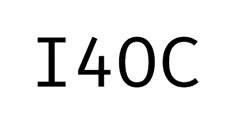Walt Whitman and César Vallejo: Confluences in the face of the American Utopia’s finale
DOI:
https://doi.org/10.18050/rev.espergesia.v8i2.841Keywords:
American poetry, modernism, Walt Whitman, civil warAbstract
The present study will focus on varied correspondences while comparing and contrasting the fluidity of Whitman’s verse in his Leaves of Grass (1855) —leading up to his Civil War section Drum-Taps (1865)— with the posthumous poems of César Vallejo; focusing on his collection España, aparta de mi éste cáliz (1939), as seen through the chronological filter of the late symbolist movement propelled by Mallarmé, whose motifs were succinctly appropriated by the Peruvian to deploy his poetics of “cross-outs”, as suggested by vallejista Julio Ortega. A background of political reportage presented by both Vallejo and Whitman will emphasize their connection through militance in their respective Civil War years, as this stage will be taken conclusively into account to point out the unwavering admiration the Andean poet held for his North American counterpart.
Downloads
References
Borges, J. L. (1969). Prólogo a su traducción selecta de Leaves of Grass al español. Editorial Juárez.
Dobry, E. (2017). Introducción a Obra escogida de Walt Whitman. Penguin Clásicos, Penguin Random House.
Eliot, T.S. (2002). Tradition and the Individual Talent. The Sacred Wood: Essays on Poetry and Criticism. Modern Library, Random House Publishing Group.
Folsom, E. (2002). Whitman East & West: New Contexts for reading Walt Whitman. University of Iowa Press.
Hart, S. (2002). César Vallejo in the New Millennium. Romance Quarterly, 49, 82-3.
Hart, S. (2002). Chronology of César Vallejo’s Poemas Humanos: New Light on the Old.
Hutchinson, G. (1998). The Civil War (1861-1865) Ed. by J.R. LeMaster and Donald D. Kummings. Walt Whitman: An Encyclopedia.
Lambie, G. (1992). Poetry and Politics: The Spanish Civil War Poetry of César Vallejo. Bulletin of Hispanic Studies, 69, 153-70.
Mallarmé, S. (2005) Le tombeau d’Edgar Poe, 1877. Poésies et autres textes. Le Livre de Poche, Librairie Générale Française.
Martí, J. (1887). El poeta Walt Whitman. El Partido Liberal. https://circulodepoesia.com/2019/05/jose-marti-sobre-walt-whitman/
Ortega, J. (2014). César Vallejo: La escritura del devenir. Penguin Random House, Taurus.
Poe, E. A. (1846). The Philosophy of Composition. Graham’s Magazine, XXVIII, 163-167.
Price, K. M. (2015). Schmidgall, Gary. Containing Multitudes: Walt Whitman and the British Literary Tradition [review]. Walt Whitman Quarterly Review. 33, 130-32.
Traubel, H. (1906). With Walt Whitman in Camden (March 28–July 14, 1888). The Walt Whitman Archive, 1-3.
Vallejo, C. (1939). España, aparta de mi este cáliz. Catalunya: Ediciones Literarias del Comisariado Ejército del Este. Abadía de Montserrat.
Vallejo, C. (2013). Rusia en 1931: Reflexiones al pie del Kremlin. Editorial Renacimiento.
Vallejo, C. (2014). Obra Poética. Editorial Peisa.
Whitman, W. (1892). A New York Soldier. Prose Works. David McKay. https://whitmanarchive.org/published/periodical/journalism/tei/per.00203.html
Whitman, W. (1954). Leaves of Grass, con introducción de Sculley Bradley. New York: Mentor Book, The New American Library of World Literature.
Downloads
Published
How to Cite
Issue
Section
License
Copyright (c) 2021 César E. Jumpa Sánchez

This work is licensed under a Creative Commons Attribution-NonCommercial 4.0 International License.


















